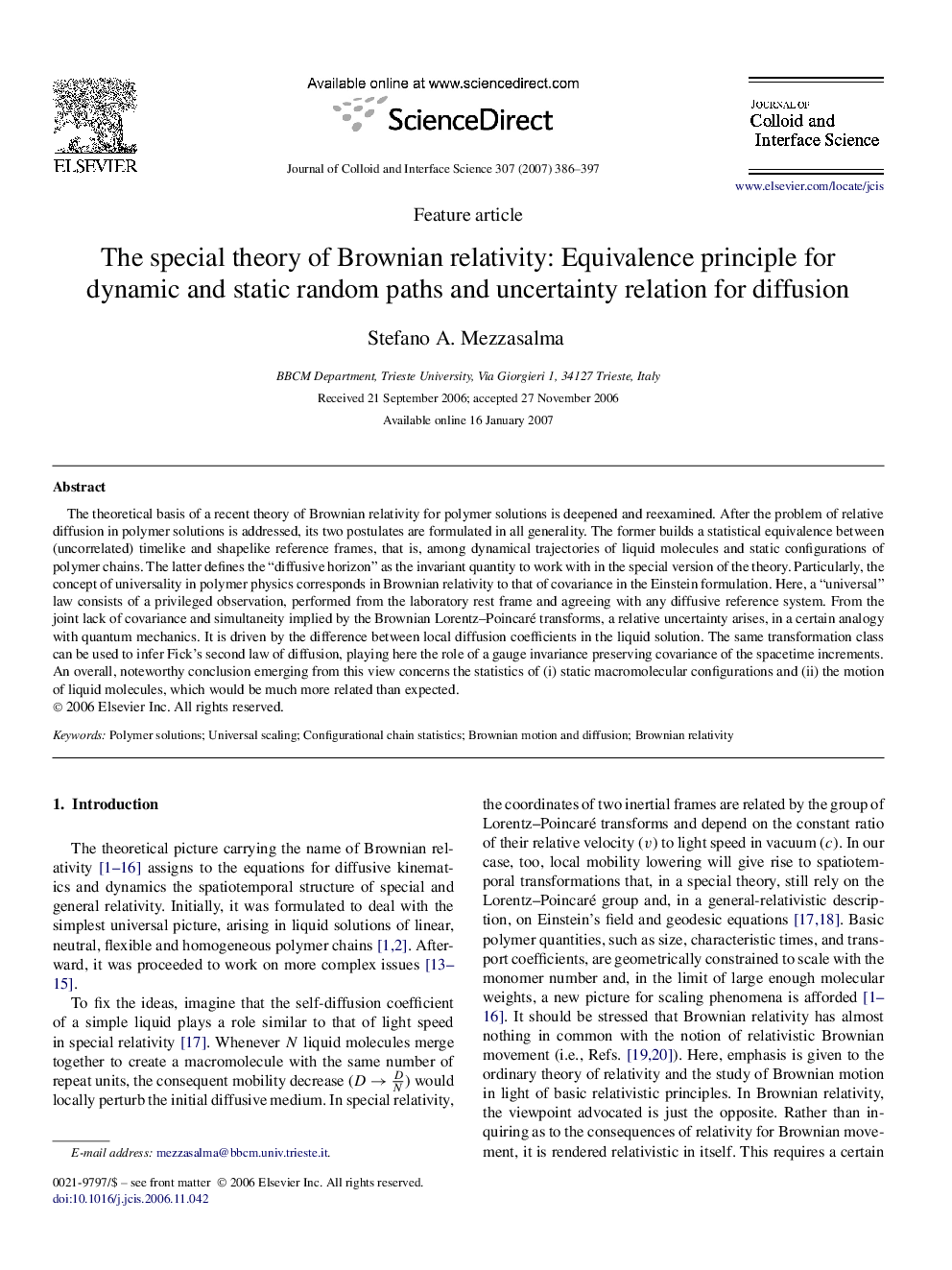| Article ID | Journal | Published Year | Pages | File Type |
|---|---|---|---|---|
| 612652 | Journal of Colloid and Interface Science | 2007 | 12 Pages |
The theoretical basis of a recent theory of Brownian relativity for polymer solutions is deepened and reexamined. After the problem of relative diffusion in polymer solutions is addressed, its two postulates are formulated in all generality. The former builds a statistical equivalence between (uncorrelated) timelike and shapelike reference frames, that is, among dynamical trajectories of liquid molecules and static configurations of polymer chains. The latter defines the “diffusive horizon” as the invariant quantity to work with in the special version of the theory. Particularly, the concept of universality in polymer physics corresponds in Brownian relativity to that of covariance in the Einstein formulation. Here, a “universal” law consists of a privileged observation, performed from the laboratory rest frame and agreeing with any diffusive reference system. From the joint lack of covariance and simultaneity implied by the Brownian Lorentz–Poincaré transforms, a relative uncertainty arises, in a certain analogy with quantum mechanics. It is driven by the difference between local diffusion coefficients in the liquid solution. The same transformation class can be used to infer Fick's second law of diffusion, playing here the role of a gauge invariance preserving covariance of the spacetime increments. An overall, noteworthy conclusion emerging from this view concerns the statistics of (i) static macromolecular configurations and (ii) the motion of liquid molecules, which would be much more related than expected.
Graphical abstractRelevant quantities in Brownian relativity: Diffusion coefficients of the liquid (D′D′) and chain (D″D″) molecules; relative (D ) and laboratory (D0D0) diffusion coefficients; molecular (Δ′Δ′) and macromolecular (Δ″Δ″) diffusive horizons.Figure optionsDownload full-size imageDownload as PowerPoint slide
